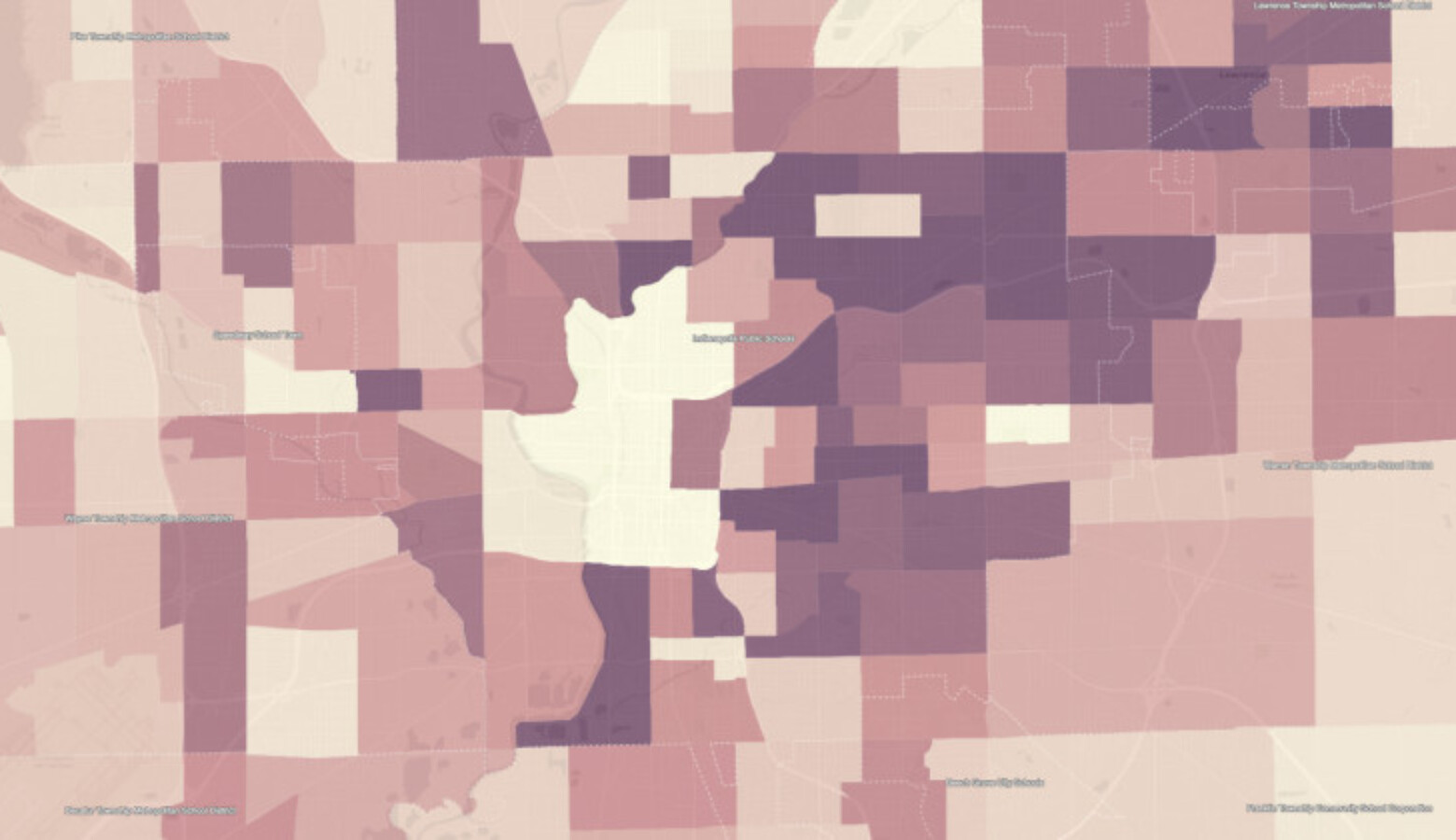Interactive Map: Where Indiana Students Lack Home Internet, Computer

More than 100,000 children in Indiana don’t have a computer or a computer with internet access at home, according to an analysis of federal data.
An analysis of federal data by WFYI News and SAVI, a public data program at The Polis Center at Indiana University-Purdue University Indianapolis, offers a look at who among Indiana’s 1.7 million children are impacted by lack of access.
The 2018 U.S. Census Bureau’s American Community Survey asked families if anyone living in the home had a computer or other similar device and if they had access to the internet.
Matt Nowlin, a Polis Center research analyst, says the survey shows 10 percent of all Indiana children are without a computer or broadband access. The rate is higher for minority students: 21 percent of black children and 15 percent of Latinx children are without access.
Rural school districts tend to have the highest share of students without a computer or ability to get online.
In the state’s largest school district, Indianapolis Public Schools, 30 percent of children have no computer or internet access. The rate is highest in the city’s Eastside and Northeast neighborhoods, where 50-75 percent of children do not have a computer or internet access at home, according to the data.
Remote learning is how students have continued to be educated since Gov. Eric Holcomb ordered school buildings to close for the 2020-21 academic year, to protect them and slow the spread of the novel coronavirus. It’s still unknown when and how school buildings will reopen. Holcomb will make that announcement in early July.
Indiana State Superintendent Jennifer McCormcik has said the state, not schools, must find a way to ensure equal access to high-speed broadband for all children.
“That infrastructure is just as important as I-69 being paved or bridges being taken care of,” McCormick said last month. “It’s crippling if, as a state, we don’t take care of it.”
McCormcik says each student must have a device powerful enough for online school work if schools need to operate remotely in the fall.
“There are different levels of inequality,” she says. “The pandemic has really brought a lot of that to light. And it’s no different than, as we move forward, we’re going to continue to see that unfortunately… if we can’t develop that capacity to really get some of those schools that we are targeting brought up to speed.”
For remote learning to be an equality table, McCormick says, students need a broadband, a proper device and the know-how of how to use the device with a school’s online learning platform.
Use this interactive map to view a school district or census tract. For the map key, click the top-left button on the map.

